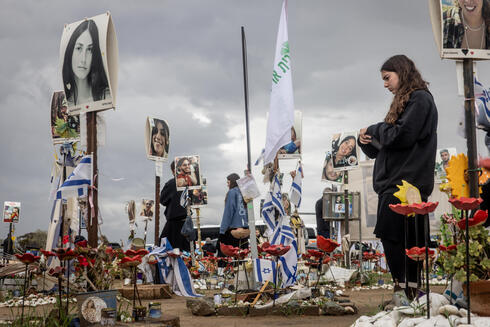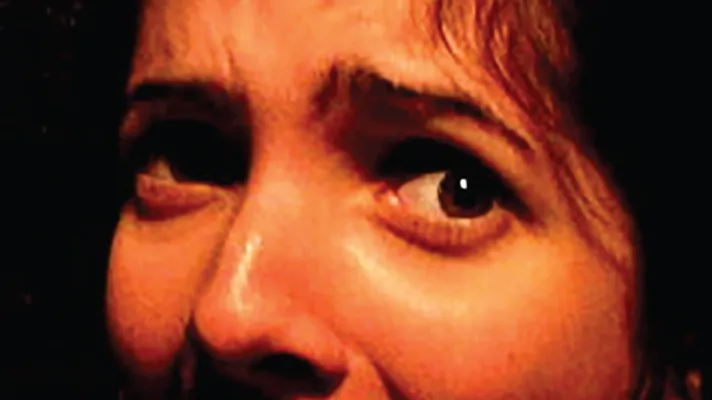Copyright ynetnews

“I kept saying for two years, ‘We’re still at war, there are hostages in Gaza. Only the day after will real healing begin,’” says Maayan Dee, a Nova survivor. “Maybe that was my shield, and others’ too. In survival mode there’s no time to think. Now, in the day after, when there’s no war to hide behind, everything rises to the surface. You meet the demons you buried deep. The day you waited for becomes the day you fear. “Now,” she adds, “we’re understanding what we were told at the very beginning: we won’t go back to who we were. It takes time for that to hit. You feel different, a bit of an odd bird. There’s a big loneliness. We feel stuck on that day, especially around the date. We don’t expect the world to stop for us, but many survivors feel we were left behind.” In at least one terrible sense, Nova survivors truly were left behind. While Israelis overall show gradual mental health recovery, with severe post-traumatic stress symptoms down to a still very high 16 percent, the share of Nova survivors with severe PTSD symptoms is about 55 percent, more than triple the general population. When survivors say they’re stuck on that day, it’s no exaggeration. As many return to routine, many Nova survivors find there is no routine to return to. Without diminishing anyone’s pain, October was especially brutal for survivors, a month of nonstop triggers: the second anniversary of the massacre, countless memorials, the end of the war, the latest hostage deal that returned every Nova hostage and victim, 11 alive and three dead, and the suicides of Roy Shalev and Yelena Giller, mother of murdered festivalgoer Slava Giller. For a community already living on the edge, it was almost too much. Lev Batuach, a nonprofit that treats roughly 1,000 survivors out of about 4,000, reports a 150 percent jump in contacts this month and triple the requests for psychiatric care among survivors already in treatment. In addition, many patients receiving care through Nova survivor organizations, by estimates one in nine, have worsened and are considered extreme cases, with suicidal thoughts, psychotic breaks, or addictions requiring specialized treatment beyond what the groups can provide. Even within this subset, conditions have deteriorated. The number of survivors hospitalized in acute distress has risen in recent weeks. “This is a cry for help,” the nonprofit wrote to the Knesset’s Young Adults Committee, which held a hearing on Nova survivors this week. “This is an unprecedented national event. Thousands of young people endured extreme trauma unlike anything seen. With the war’s end, we have entered the hardest and most dangerous stage for them.” “I have a feeling, and it’s hard to say, that Roy’s case won’t be the last,” says Dee. “I’ve heard many survivors say, ‘I understood him.’” The finding that 55 percent of survivors show severe PTSD symptoms is part of a major, ongoing study examining the catastrophic collision between mass trauma and psychedelics on Oct. 7. Three hundred seventy-eight were murdered at the party that became a killing field, and 44 were kidnapped. The Nova massacre is likely the only case in recorded history where a mass traumatic event occurred amid widespread use of consciousness-altering substances. That grim reality allows researchers to study in real time how different substances affect trauma and recovery and to explore new treatment paths. The study, conducted with Lev Batuach, is led by Prof. Roee Admon, a trauma expert, and Prof. Roy Salomon, a psychedelics researcher, both from the University of Haifa. Data come from detailed questionnaires, saliva samples, smartwatches tracking sleep, EEGs, fMRI scans, and in-depth interviews. Hundreds of survivors are enrolled, making it the most comprehensive study of the disaster. Early results published in February showed that people who had taken MDMA at the festival initially showed fewer PTSD symptoms than those who used other substances or none at all. “According to our data, MDMA had a protective effect after several months,” says Salomon. “Those who drank alcohol or used cannabis fared worse than those who took nothing.” Another major finding came from smartwatch data showing that irregular sleep four or five months after the attack predicted higher PTSD rates later. Those who regained stable sleep patterns had fewer symptoms. Salomon will present these findings Thursday at a Lev Batuach conference titled “Trauma, psychedelics and treatment in wartime” at the Peres Center for Peace, with leading trauma and psychedelics researchers, clinicians, and Nova survivors. Most of these findings were already known, but the study has advanced. After tracking participants for another year, researchers found the protective effect of MDMA faded completely. Two years after Nova, what someone took that day no longer explains their current condition. Another new insight looks at the attack itself. Many participants reported that fear and stress snapped them out of their high, except among those who took psychedelics like LSD. Their experiences stayed strong or even intensified. Researchers say this may show how natural stress hormones interact with psychoactive drugs, and future analysis could reveal whether these reactions shape recovery. Over time, three main trauma response patterns have emerged worldwide: 60 percent resilient, 20 to 25 percent vulnerable but recovering, and 15 percent prone to chronic PTSD. Among Nova survivors, that pattern flipped. Only 25 percent were resilient, more than 50 percent vulnerable, and over 20 percent prone to chronic PTSD. “These numbers are staggering,” says Admon. “Thousands of young people can’t break free from the trauma. They have nightmares, trouble concentrating, substance use, severe sleep problems.” National Insurance data show similar patterns: only half of 3,559 Nova-related victims returned to work for five months or more. Many have not returned at all. Another strong risk factor is gender. “The most significant risk factor for PTSD is being a woman,” says Admon. “Women report more symptoms, but it may also be that men hide their pain, turning instead to alcohol or drugs.” Salomon adds that many survivors just below the clinical threshold still live in deep suffering. “Their lives are hell, even if they don’t check every box. They’re invisible to the system. We’ll be judged by how we hold them with compassion.” Nova community members believe the real number is even higher. “They say 55 percent, I say 80,” says Omri Sasi, a producer who survived and now runs the Nova Tribe nonprofit. “Anyone who was there will never be the same. The state must not abandon us twice.” Reut Plonsker, clinical director at Lev Batuach, warns that with the war’s end, suicide and depression risks rise. “Many are isolating. Even after two years, they barely go out. We see extreme cases with psychosis, suicidality, addiction, and deep depression.” Researchers agree Nova was a unique event, so extreme that its lessons may not apply elsewhere. “Even our control group, Israelis who lived here during these two years, show high PTSD rates,” says Admon. “It raises the question of whether Israeli trauma can even be compared internationally.” Nova survivor: “Some days there’s no choice. The substances are the only thing that quiets the background noise, the nightmares, the irritability. I tried to quit several times. There’s this expectation that if you stop, the world will get better, but it doesn’t. Very quickly I went back to using drugs, taking pills, drinking.” Another challenge is that many participants never stopped using substances, some increasing or mixing them, complicating the data. Survivors say many self-medicate and cannot stop. “Some days substances are the only way to quiet the noise,” says one survivor. “I tried quitting but came back to it. It’s not about choice. It’s about pain.” Shye Klein, another survivor, says, “After Nova I was trapped in trauma and grief. I used MDMA almost every weekend to escape. I was suicidal and angry. Eventually, through photography, I stopped. Many haven’t. Healing isn’t something you do alone.” Admon, Salomon and other experts agree that drug use and trauma are intertwined. The latest report by Israel’s Center for Addictions and Mental Health shows alarming national trends: tranquilizer and sleep-med use up 2.5 times, opioids and stimulants nearly doubled, and risky use reported by one in four Israelis. Among 18–26-year-olds, it’s one in three. One in two people with PTSD also struggles with substance use, according to the report. “There is no PTSD treatment without addiction treatment,” says Prof. Shauli Lev-Ran, a psychiatrist and the center’s academic director. “Otherwise it’s a waste of time and money. Behind every addiction is pain. The goal isn’t to take away what holds someone up but to help them stand on their own.” Salomon concludes, “If we don’t address their suffering now and direct resources immediately, we’ll see this trauma return in new forms such as alcoholism, violence, and depression for years to come.”



